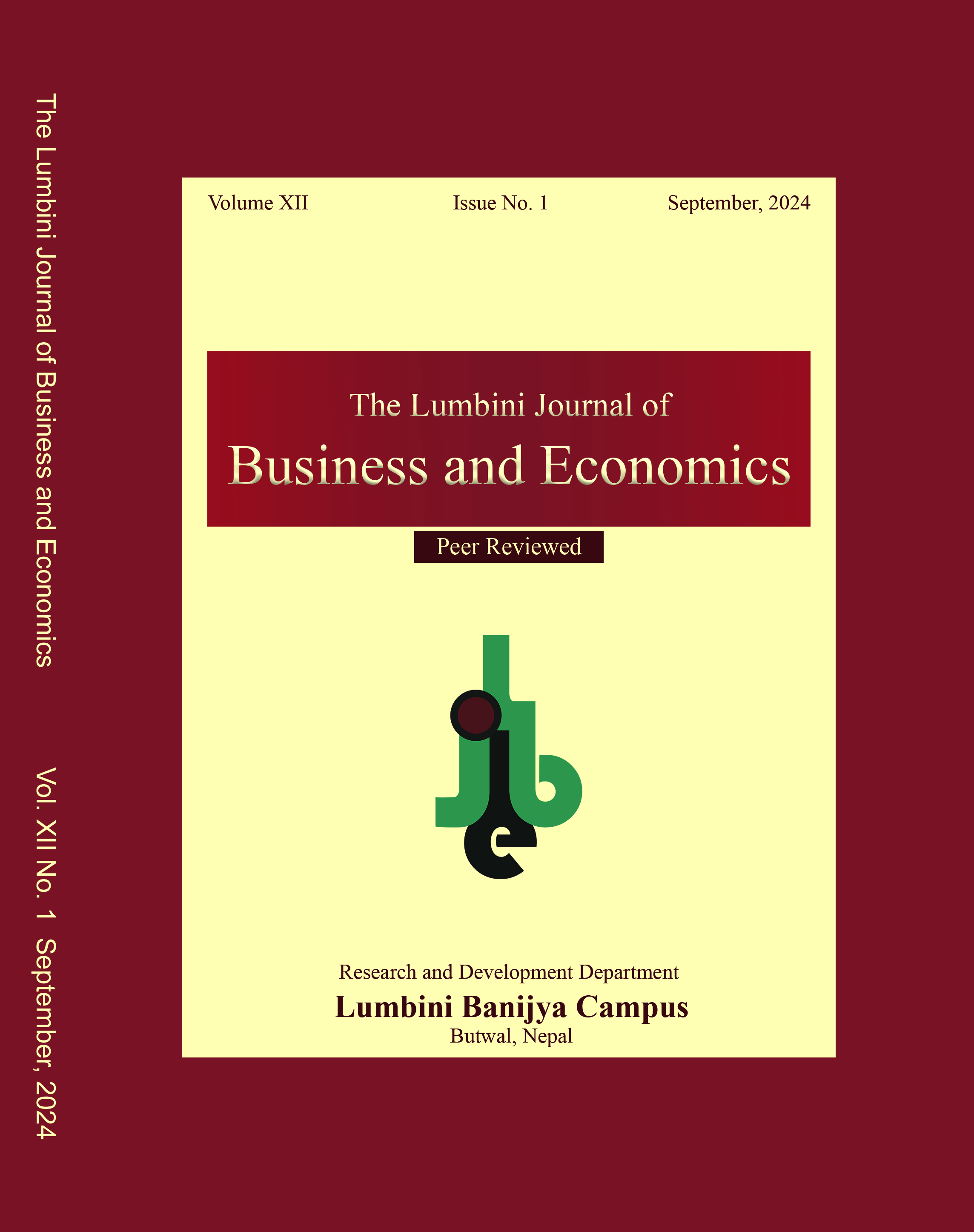Remittance and Inflation Nexus in Nepal: An ARDL Approach
DOI:
https://doi.org/10.3126/ljbe.v12i1.70315Keywords:
ARDL, economic growth, inflation, remittance.Abstract
Purpose: This research aims to analyze the nexus between the inflow of remittances as a share of GDP and the inflation rate along with some control variables in the context of Nepal.
Methods: The study used descriptive and causal research design. The collected data over the periods from 1990 to 2022 A.D. was analyzed by applying the ARDL model. The confirmation of model was conducted through ADF test, VAR lag length criteria. Similarly, post diagnostic check was conducted via LM test, Breusch-Pagan-Godfrey, Jarque-Bera, Ramsey RESET Test and KUSOM test.
Results: This research work reveals that there is a significant long-run positive effect of remittance on inflation as well as a negative effect of the foreign exchange rate on the inflation rate in Nepal. The result of the error correction mechanism shows that any short-run disequilibrium among the variables tends to return to their long-run equilibrium with a speed of 1.05 percent in a year.
Conclusion: The remittance inflow as a share of the GDP of Nepal has a positive relation and effect with the inflation rate of Nepal. In this regard, it is necessary to implement policies effectively to utilize the remittance earnings in productive sectors to control inflation rather than consumption by offering attractive schemes.




